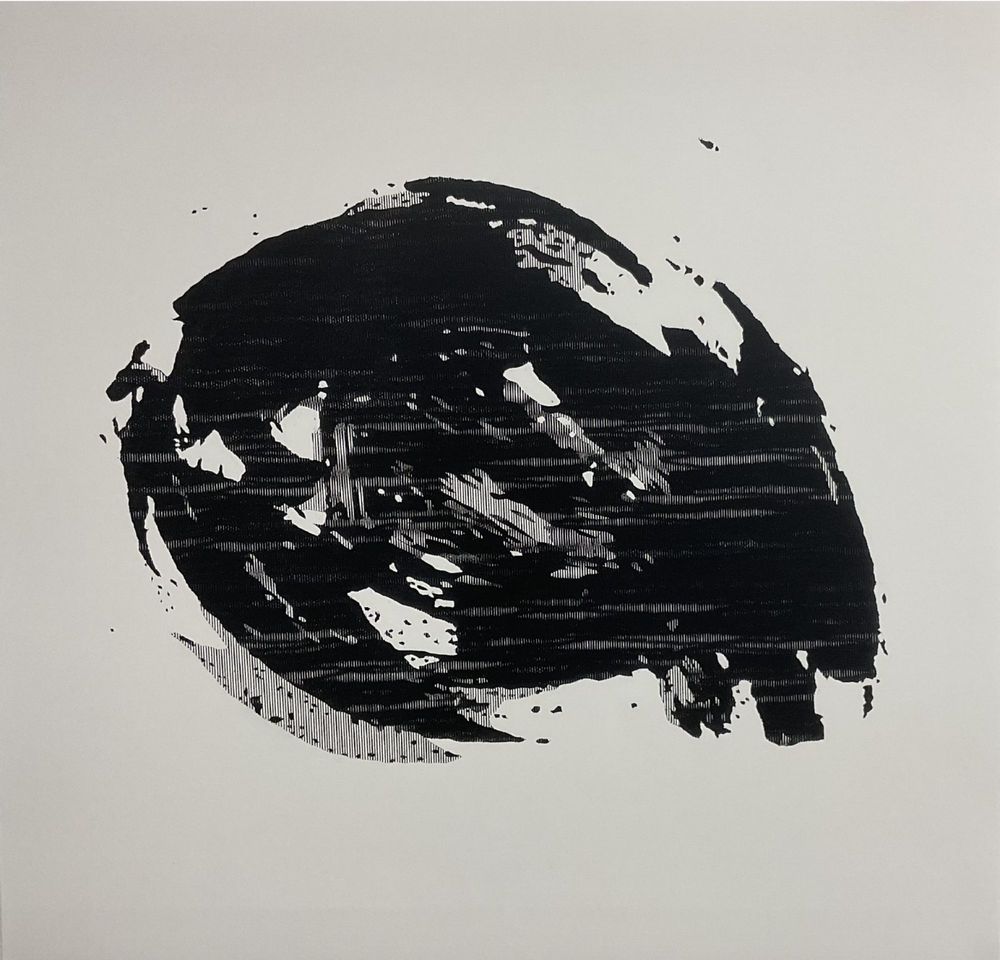
Towards the Center – Homage to Reigl
In the Horn Collection, Judit Reigl’s (1923-2020) Centre of Dominance (1959) is more than a pictorial composition: it is an energetic field that speaks through the mobilisation of body and spirit. Here, the painterly gesture is not simply an act of expression but a force in its own right, emerging at the threshold of instinct, physicality and concentrated thought. In the exhibition space, this work is surrounded by the personal reflections of sixteen contemporary artists – not quotations, but questions, re-imaginings and continuations. Across different media and painterly languages, their works align around a shared axis: how, today, can art address ideas of force, of centre, of movement and of transformation? Within this dialogue, Reigl’s gesture becomes alive once more – not as the past, but as a disruptive presence.

Schedule
In the Horn Collection, Judit Reigl’s (1923-2020) Centre of Dominance (1959) is more than a pictorial composition: it is an energetic field that speaks through the mobilisation of body and spirit. Here, the painterly gesture is not simply an act of expression but a force in its own right, emerging at the threshold of instinct, physicality and concentrated thought. In the exhibition space, this work is surrounded by the personal reflections of sixteen contemporary artists – not quotations, but questions, re-imaginings and continuations. Across different media and painterly languages, their works align around a shared axis: how, today, can art address ideas of force, of centre, of movement and of transformation? Within this dialogue, Reigl’s gesture becomes alive once more – not as the past, but as a disruptive presence.
Györgyi Cséffai (1991)Fragments’ is not a mere companion to the painting but its material echo. The tense, explosive energy contained in Reigl’s work seems here to have solidified, breaking into shards that delineate the very shape of absence. The sculpture preserves not the trace of destruction but the halted vibration of a gesture: action transfigured into object, dynamism into a fragmented presence. Its fractured circle recalls the memory of wholeness, while revealing its fragility and the sense of time sealed within matter.
Csaba Fürjesi (1969), a Salzburg-based artist, reflects on Reigl’s painting in Map of Dominance (Homage to Judit Reigl) with the precision of a draughtsman. Employing his own “Multitypie” process, he does not reproduce but reframes the original gestures. Where Reigl’s art is governed by spontaneity and the unpredictability of bodily movement, Fürjesi’s approach is measured, controlled and exact.
Zsuzsanna Geszthelyi Nagy (1970), in her Inner Balcony series, one piece seeks unity between the flow of “outside” and “inside,” drawing a parallel between the tension and continuity of Judit Reigl’s gestures. The color red, which gave weight and dynamism to the compositions in Reigl's works, plays a central role in Gesztelyi's work, appearing as an almost insatiable painterly desire. The work thus reflects both the archetypal layers of inner memory and the expression of movement and flow in Reigl's painting.
Ágnes Hardi (1989) examines the relationship between inner and outer order through a centrifugal spatial structure. Nine monochromes and a mosaic-like grid evoke energy radiating outward from a centre, mirroring Reigl’s dynamics of centre and periphery. At the same time, the work reflects on structure, direction, and the human desire for order and system-making.
Judit Horváth Lóczi (1981), in her work entitled Hommage á Judit Reigl, she evokes the energies and rotation around a central point of the Dominancia központ series with geometric, laser-cut, layered plywood. The black and purple front panel and the red reflection follow the characteristic color scheme of Reigl's paintings, while the linear structures stiffen the organic, gesture-based forms and place them in a new dimension. The white frame simultaneously embraces and highlights the work, emphasizing the multi-layered nature and energy radiating from the center, which is the fundamental experience of Reigl's painting.
Botond Kiss András (1992) invokes the deep pull of blue as an inner space, a place where intuition, dream and waking thought converge – much as gestural painting hovers between spontaneity and intention. Black ink forms, edged in blue aura, connect with the white of the canvas; circular movements embody the energy of motion. While Reigl anchors a central vortex, Kiss shifts the centre beyond the field of vision, inviting the viewer’s imagination to discover its own locus.
Márta Kiss (1974) treats the canvas as a double-sided surface, opening a dialogue between front and back. Here, the reverse of embroidery is foregrounded, revealing a network of dispersed points that appears random yet forms a quiet order. Whereas Reigl’s movements are dynamic and momentary, Kiss’s gestures are monotonous, fragmented and meditative, stretched across time.
Kata Koleszár (1988) places a balloon-twisted plant at the centre of her work. Its idyllic form is laced with tension, as if on the verge of bursting – a premonition of an inevitable but deferred explosion. Surrounded by repeating floral motifs, shoots and fallen leaves, the plant becomes part of a slowly unfolding painterly language in dialogue with Reigl’s compositions.
Nikolett Kováts (1978) foregrounds the immediacy of movement fuelled by inner energy, and the image experienced bodily, reflecting Reigl’s spiral dynamics. Her Burst composition links to Reigl’s idea of the centre, while playful strokes of yellow, blue and red create rhythm and contrast. Where Reigl’s black paint embodies weight and density, Kováts’s work resonates in a lighter, more open space. Burst its composition connects to Reigl's center as a central space, while yellow, blue, and red brushstrokes playfully create contrast and rhythm. Although Reigl's heavy energies dominate the body of black paint, Kováts's painting resonates in a lighter, airier space.
Henrik Martin's (1979) (Tű 02) work titled Needle 02, captures the delicate balance of the moment of creation, revealing how the central work of the exhibition comes together in its unique order. Every gesture, energy, and form appears simultaneously on the canvas, uncovering the underlying harmony, rhythm, and inner order behind seemingly random events.
Enikő Márton (1980), painting Connection was inspired by Judit Reigl's circular movements toward the center and the power of the central red form. The red arc bridges a gap in space, symbolizing strength and inner concentration, while the pastel blue and pink spots bring lightness and a reference to spiritual dimensions to the composition. The image is thus both a visual reference to Reigl and Márton's own perspective, where space, power, and delicacy intertwine.
Eszter Poroszlai's (1974) work evokes a visual imprint of the body and inner energy, where movements and the rhythm of breathing are drawn on paper as galactic patterns. The Yoga Drawing with Cones, created for the exhibition, was born from the interpretation of a previous movement imprint as a negative; the cones embroidered in cyanotype reveal the direction of energy towards the center, the alternation of expansion and contraction. The work thus creates a meditative space and offers a visual metaphor for the continuous flow of energy and the harmony of movements.
Dániel Sallay (1985) in his work, he captures the process of destruction and reconstruction, where new forms are created from the debris left behind by an explosion. The work offers a post-apocalyptic yet thought-provoking spectacle, where the energies of the past meet the possibilities of creative rebirth. The sculpture presents a visual metaphor for the delicate balance between destruction and creation.
Sándor Szász (1976) presents an imprint of the inner universe, where lyrical abstraction meets cosmic thought. At its centre, a grey, cloud-like mass embodies both destruction and regeneration, while floating spheres evoke the multiplicity of thought. The painting stages a dialogue between spontaneous gesture and deliberate form, chaos and latent order.
Gábor Szenteleki (1978) work entitled Body Play responds to Judit Reigl's dynamic, swirling movements while examining painterly gestures and the documentation of the body. Dividing the image field into twelve separate image spaces, the composition can be freely varied, so that the body forms outlined in black paint preserve the moment of movement and the direction of energy, while offering a play of infinite possibilities.
Kati Vilim (1970) works with the visual representation of internal, invisible, and emotional spaces, using Judit Reigl's creative process as inspiration. Through layers, textures, and the interplay of positive and negative space, the image conveys the lived moment and a sense of timelessness, drawing parallels with Reigl's performative gestures.
The Space Art Gallery
The Space, which opened in July 2022, is more than just an exhibition venue — it functions simultaneously as a community hub, educational space, and art management centre. Our goal is to create a meeting point between those interested in contemporary art and key figures in the art world — artists, collectors, and curators. We believe that art can also be a communal experience, so alongside exhibitions, we welcome our visitors with lectures, guided tours, discussions, workshops, and other inspiring events. Our home is located in a unique Art Nouveau building in the heart of Budapest’s 1st district, on Hattyú Street. Built in 1913, the house originally evoked the atmosphere of the turn of the century with its richly decorated towers and elegant details — and although it has undergone many changes over time, it has preserved its character. When stepping through the gate, one might feel as if they have entered a Parisian inner courtyard — the building’s distinctive charm provides the perfect setting for presenting contemporary art.

